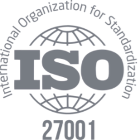Workplace analytics are important - wherever you work
Workplace analytics is more essential now than ever – regardless of whether teams are working remotely, in the office, or follow the hybrid work model.
Why?
As an employer, by extending the concept of the workplace, you also commit to ensuring the quality of the extended workplace experience. In other words, if your employee prefers to work at home on his sofa, you are responsible to help make this sofa a pleasant, comfortable, and productive work environment.
How?
By applying workplace analytics in your decision-making.
Workplace analytics in the hybrid work era
The three most common workplace analytics categories include office utilization, employee productivity, and satisfaction metrics. Each of them provides a different perspective on your workplace and how employees interact with it.
Office analytics
The office is not going anywhere - but making it a workspace that people want to visit can be challenging. These days, health and safety play a prominent role in motivating employees to get back onsite. Therefore, you should measure workplace analytics to optimize it for social distancing. Moreover, organizations that consider shrinking their real estate footprint can count on utilization data to find a rightsizing formula that is favorable for both businesses and employees.
Office metrics you should look into:
- Office occupancy (maximum/real-time)
- Office capacity (maximum / real-time)
- Office utilization (maximum / average)
- Number of space bookings
- Percentage of no-shows
- Most booked workspaces
- Busiest days (most space bookings) in the office
Productivity analytics
With the shift to hybrid work, some organizations have lost the sense of “security” that stems from the ability to see how employees spend their work time. Some may even say that they cannot keep track of productivity anymore. But that just cannot be true: many informative performance metrics, such as time spent on tasks or employee turnover rate, can be successfully captured in the digital work environment. A good understanding of the teams’ productivity drivers (time management, technology usage, or focus time) is an indispensable tool in your organizational arsenal.
Productivity metrics you should look into:
- Time spent on various tasks
- Revenue per employee
- Effectiveness rate
- Absenteeism rate
- Overtime per employee
- Focused work vs. collaboration ratio
- Technology usage
Employee experience analytics
Employee experience data gives businesses the insights needed to create a favorable work environment. Nowadays, its significance is rapidly growing: to thrive in the world of hybrid, workplaces must become more employee-centric than ever before.
Compared to office or productivity analytics, employee experience data is usually (but not exclusively) qualitative.
Employee experience data you should look into:
- Employee sentiment analysis results
- Employee turnover rate
- Employee Net Promoter Score
- Internal promotions
- Employee feedback
- Pulse survey results
- 360-degree feedback
Enhancing employee experience with data-driven decision making
The vast majority (89%) of organizations see employee experience as a crucial strategic differentiator. However, only 34% are fully satisfied with their capability to ensure it. This gap between the current and the desired state can be bridged by applying data in the daily creation of workplace culture. Here are a few examples of what you can achieve by putting workplace analytics in action:
Optimize office for social distancing
To keep up with the new safety regulations most companies will need to implement physical distancing by defining optimal capacities of their offices. Making it work on both the business and the employees will require digging into office utilization data and its trends. Having this information will help optimize the office for social distancing and make employees feel safe back on site.
Boost your employer brand
Simple sentiment analysis or a pulse survey can help you understand how the employer image created by the company aligns with the way employees perceive it. A deep gap between the two is directly linked to poor workplace experience. If this is the case in your organization, incorporating employee feedback into your workplace strategy should help avert the crisis and strengthen the employer brand.
Improve employee retention
The ultimate promise of hybrid work is environments that organically fit into employees’ lives so that each of them can find the right work-life balance and know the value they bring to the company. The absence of these elements may significantly compromise employee retention targets. By combining employee productivity and satisfaction analytics to gain insights on how favorable your work environment is, you can build committed, long-term relationships with your teams.
Improve teamwork
Sharing data with your workforce fosters a culture of transparency and eliminates communication silos. This, in turn, creates a favorable environment for collaboration. In addition to that, organizations that make workplace data available to all employees can gain even more leverage by engaging everyone in the process of continuous improvement.



.png)




